Android 13 Adds Granular Vibration Sliders For Notifications, Media, And More
Another noteworthy feature that Google has introduced with the latest Android 13 developer preview is a granular slider for different vibrational scenarios. While some Android devices do offer users the ability to change the vibration intensity during an incoming call and/or notifications, but Android smartphones, so far, have lacked granularity when it comes to vibrations.
With the latest Android 13 developer preview, the vibrations are split up between alarms, media, notifications, phone calls, and touches, allowing you to control them on a more granular level. Plus, you can also have the vibration start off before gradually ringing. This could turn out to be quite useful if your phone is on your table and you won’t want it to ring at full throttle straight away.
Как установить новый Андроид без подключения к компьютеру
Самый простой вариант изменить версию ОС – запустить процесс на самом смартфоне.
Обычно система оповещает о наличии новой версии (уведомление появляется в верхней части экрана гаджета):
Примечание: алгоритм обновления на новую версию Android всегда один и тот же: неважно запущен апдейт операционной системы до 5.0, 7.0 или 9.0. В зависимости от модели телефона и текущей модификации прошивки, текст и оформление уведомления на экране могут отличаться. В зависимости от модели телефона и текущей модификации прошивки, текст и оформление уведомления на экране могут отличаться
В зависимости от модели телефона и текущей модификации прошивки, текст и оформление уведомления на экране могут отличаться.
После получения уведомления следует нажать «скачать», и дождаться пока ПО загрузится на устройство.
Когда Android будет скачан, в панели уведомлений появится соответствующее сообщение, и пользователю будет предложено установить или отложить процесс.
Важно: перед тем, как нажать «установить сейчас», рекомендуется ознакомиться с предоставленной выше информацией, где разработчики предупреждают о возможной потере личных данных, и необходимости сделать резервное копирование. Не всегда система уведомляет пользователя о наличии новой версии Android. Причиной может служить отсутствие подключения к интернету или отказ от получения уведомлений (можно задать в разделе «Обновление ПО»)
Причиной может служить отсутствие подключения к интернету или отказ от получения уведомлений (можно задать в разделе «Обновление ПО»)
Не всегда система уведомляет пользователя о наличии новой версии Android. Причиной может служить отсутствие подключения к интернету или отказ от получения уведомлений (можно задать в разделе «Обновление ПО»).
В этом случае загрузить новый Android можно вручную. Для этого необходимо выполнить следующие шаги:
- перейти в «Настройки».
- выбрать раздел «О телефоне» или «Об устройстве».
- нажать «Обновление ПО».
- после проверки на наличие нового ПО, на экране устройств появятся или предложение установить прошивку, или уведомление о том, что устройства уже обновлённые.
What is Android 13?
Android 13 (code name Tiramisu) is the 2022 release of Google’s mobile operating system. This latest iteration of the platform arrived after four beta cycles and a preview release that landed in February 2022.
Android itself is the most widely used mobile operating system on the planet, with an 86.2% global market share. That global market share has held steady in the 80s since 2014, with its lowest rank being 81.1% in 2014.
When you break down the market share by country, you do find Android’s hold on consumers to wane considerably. For example, in the U.S., Android has a 48.5% share, while iOS holds 51.2%. As of May 2022, Android 11 was the most widely-used version of the platform, with 28.3%. That, of course, will most likely change once more handsets start picking up the 13th release and more devices migrate to 12.
SEE: iCloud vs. OneDrive: Which is best for Mac, iPad and iPhone users? (free PDF) (TechRepublic)
One of the issues facing Android 13 is that it stands in the shadow of Android 12, which brought about one of the biggest changes to the platform since its inception. Material You introduced a brand new look and feel for Android, which gave it a much-needed refresh to bring it in line with current aesthetics.
What does that mean for Android 13? It could mean that, at least for some users, the latest release of the operating system will be a disappointment. The devil, of course, is in the details. There are plenty of new features and changes to get excited about.
Вносим изменения в файл
Вы можете исправить возникшее несоответствие устройства магазину вручную – придется откорректировать документ. Для начала установите любой файловый менеджер – подойдет ES Проводник или Total Commander. Их можно найти в Плэй Маркете в свободном доступе, проблем с установкой не возникнет.
Теперь исправляем то, что сервисы Гугл Плей не поддерживаются! Запускаем менеджер:
- Откройте настройки и активируйте опцию доступа к рут-директориям;
- Теперь ищите папку «System» и запускайте файл под названием «build.prop»;
- Открывайте документ в любом текстовом редакторе (можно встроенном);
- Нужно заменить строки «ro.product.model» и «ro.product.manufacturer» на название смартфона, которым хотите притвориться. Например, «Mi10» и «Xiaomi».
Пока работа с проводником завершена – так как Google Play не поддерживается на вашем устройстве, необходимо почистить данные о нем.
- Откройте настройки смартфона;
- Найдите раздел с приложениями, в нем откройте Плэй Маркет;
- Кликните по кнопке «Очистить кэш» на нижней панели;
- Рекомендуем также воспользоваться опцией «Очистить данные».
Перезагрузите устройство и возобновите попытки! Вы смогли исправить ошибку, когда Гугл Плей не поддерживается на вашем устройстве.
Android 13: New features
Photo picker function
Users have now the option of not allowing apps to access the entire image gallery. The system gives you the option to select certain photos and videos that will be visible to apps. This way, Android ensures much better privacy protection. This also changes results in new permissions being required for the most common apps to at least access the selected photos.
New permissions for app notifications and media access
To fight notification spam, users already have some control over how and when apps can send alerts on their Android phone. Now Android 13 offers a better solution, with system permission for notifications the apps you download will now need your explicit permission to send notifications.
Transfer by tapping
Android 13 offers now the option to initiate a file transfer between devices using NFC, just like the old and good Android Beam. Although Nearby Share offers a similar solution to the same task, Tap-to-Transfer uses the ever more popular NFC antennas (or potentially UWB), to transfer photos, videos, and other documents between phones.
New Quick Settings and QR code reader shortcut
The Quick Settings menu in the notification shade now offers three new shortcuts: «Color correction», «One-handed mode», and «QR code». This last one opens up the camera and allows to quickly scan codes even from the lock screen.
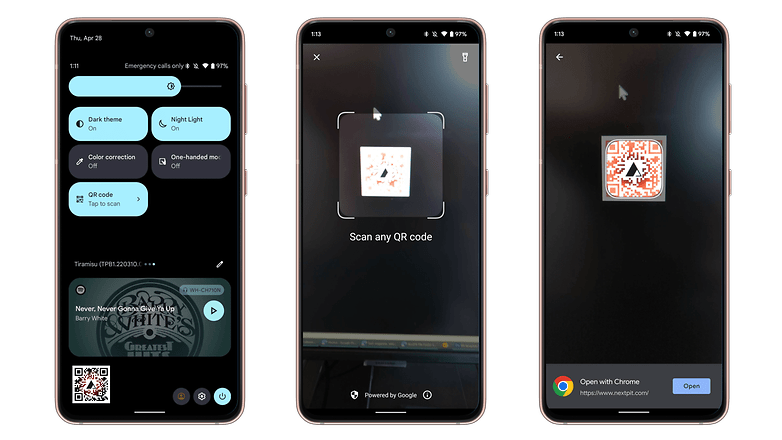
The QR Code tool can be opened from the Lock screen’s quick setting in Android 13 / NextPit
User, Settings, and Power shortcuts on the quick settings are now at the bottom
In the screenshot above (to the left), you can also notice that the shortcuts for the User account, Settings, and Power menus were moved to the bottom of the screen, instead of hanging below the last notification.
Quick tap can now turn on/off the flashlight
Popular among NextPit’s readers, the quick tap feature found in recent Pixel phones now includes one extra feature on Android 13: the option to toggle the flashlight on and off by tapping on the back of the phone.

Quickly activate the flashlight by tapping the Pixel’s back / NextPit
More options for tuning vibrations & haptics
Android 13 added two new options for setting how and when the phone vibrates. The settings can be found in the Vibration & haptics menu, which now displays options for Alarm vibration and Media vibration.
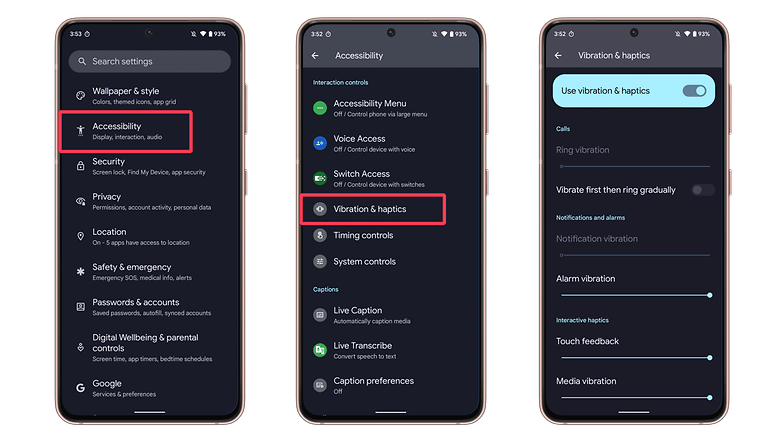
On the Pixel 6, all vibration options can be fine-tuned, instead of offering a simple on/off toggle / NextPit
Phone user’s avatar personalization
For the few people that rely on the multiple users feature on Android—which unfortunately is disabled by many brands—, Android 13 adds an option to change the profile picture. That way, each user can have their own image, not having to use the generic silhouette differentiated only by color.
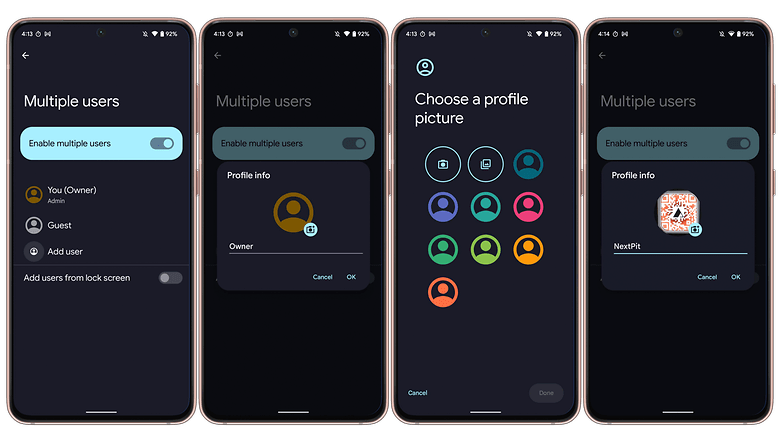
Say goodbye to the current bland profile pictures / NextPit
Display size and font size now use a single menu
Previously, if you wanted to change the display size and text size, you would need to navigate and change settings in two different menus. With Android 13 both options now occupy the same menu under the Display options in the Settings app: Display size and text.
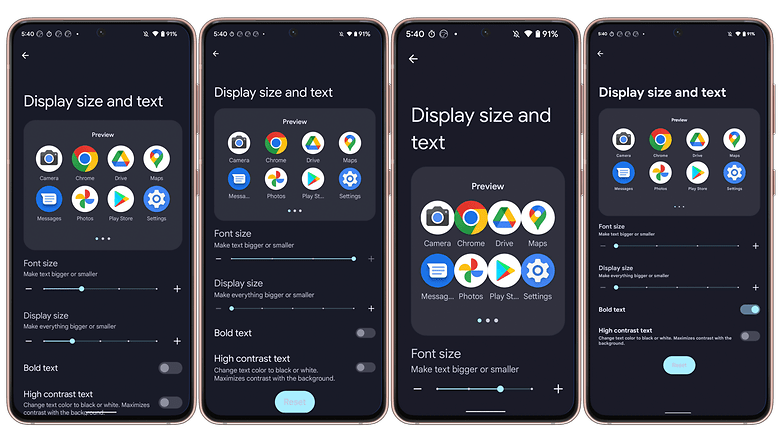
Make Android as yours (or as disproportionate) as you want / NextPit
Clipboard notifications at the bottom of the screen
With Android 13, when you copy a text or image to the clipboard, the system will display a snippet in the bottom part of the screen. The feature works just like the screenshot confirmation on Android 12, offering to quickly edit the copied object.
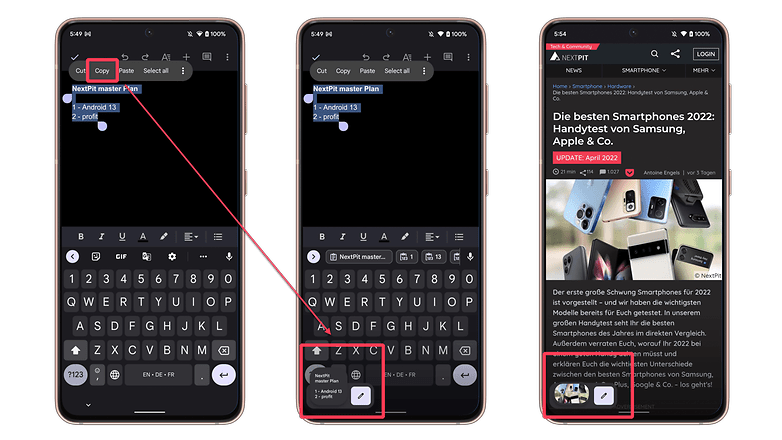
Android 13 overview clipboard snippet / NextPit
Other features on Android 13
Besides those, Android 13 offers a few other smaller changes:
- Improved UWB support, with more features available for device makers.
- Support for Bluetooth LE Audio, and the .
- Audio output selector for Material You, offering the option to choose between speakers, phones, and setting the volume.
Современный дизайн и улучшенная эргономика
Смартфон Poco Android 13 поражает своим современным дизайном и улучшенной эргономикой, что делает его более удобным в использовании. Компактные размеры и тонкий корпус делают его приятным в руке, а также позволяют легко поместить его в карман или сумку.
Один из главных нововведений в дизайне Poco Android 13 — это безрамочный экран. Благодаря отсутствию рамок вокруг экрана, пользователь получает максимально возможную площадь для визуализации контента
Это особенно важно при просмотре фильмов, игр или просмотре фотографий
Еще одно преимущество нового смартфона — наличие эргономичной кнопки блокировки и передней камеры. Эта кнопка расположена таким образом, что ее удобно нажимать и она не мешает при длительной работе с устройством. Также передняя камера расположена идеально, что позволяет делать качественные селфи без особых усилий.
Материалы и цвета
Смартфон Poco Android 13 доступен в нескольких цветовых вариантах, что позволяет выбрать подходящий вариант для себя
При выборе цвета также стоит обратить внимание на материал корпуса. В этой модели использованы высококачественные материалы, которые делают устройство прочным и надежным в эксплуатации
Защита от воды и пыли
Poco Android 13 имеет защиту от воды и пыли по стандарту IP68, что позволяет использовать его в различных условиях. Благодаря этому, вы сможете спокойно пользоваться смартфоном даже во время дождя или на пляже.
В целом, смартфон Poco Android 13 имеет современный стильный дизайн, который гармонично сочетается с удобной и практичной эргономикой. Вы получите превосходный пользовательский опыт и насладитесь комфортом при использовании этого устройства в повседневной жизни.
Видео:Ждали ГОД MIUI 14 GLOBAL для Xiaomi чем лучше MIUI 13Скачать
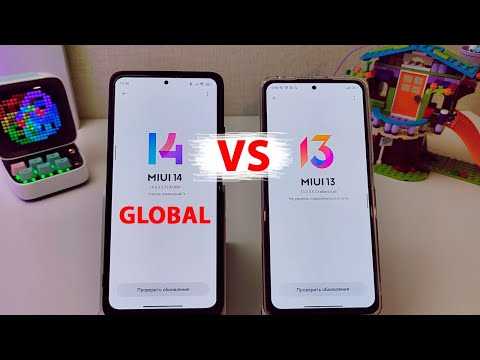
Удаление
Чтобы удалить уведомление, используем NotificationManager и его метод с указанием id уведомления.
NotificationManager notificationManager =
(NotificationManager) getSystemService(NOTIFICATION_SERVICE);
notificationManager.cancel(1);
Либо методом можем удалить все уведомления сразу
NotificationManager notificationManager =
(NotificationManager) getSystemService(NOTIFICATION_SERVICE);
notificationManager.cancelAll();
При удалении уведомления нет необходимости проверять, отображается оно или нет. Если уведомления по каким-то причинам уже нет, то просто ничего не произойдет.
Как установить Android 13 DP
Поскольку это всего лишь ранняя бета Android 13, Google сильно ограничивает ассортимент устройств, на которые её можно установить. Это только «Пиксели». Однако недостаточно просто владеть нужным смартфоном. Есть и другие ограничения, которые заключаются в сложности установки DP-сборок:
- Перейдите в «Настройки» — «Система и обновления» и включите режим разработчика;
- Запустите в браузере утилиту Android Flash Tool для разработчиков по этой ссылке;
Установить Android 13 DP можно через Android Flash Tool
- Подключите свой смартфон Pixel к компьютеру и включите отладку по USB;
- Следуйте инструкциям на экране по установке тестовой версии обновления Android 13.
Чем отличаются Android 12 и Android 13?
Среди новшеств Android 13 — обновлённые темы и функции конфиденциальности, новые инструменты управления языками и, конечно же, множество внутренних обновлений.
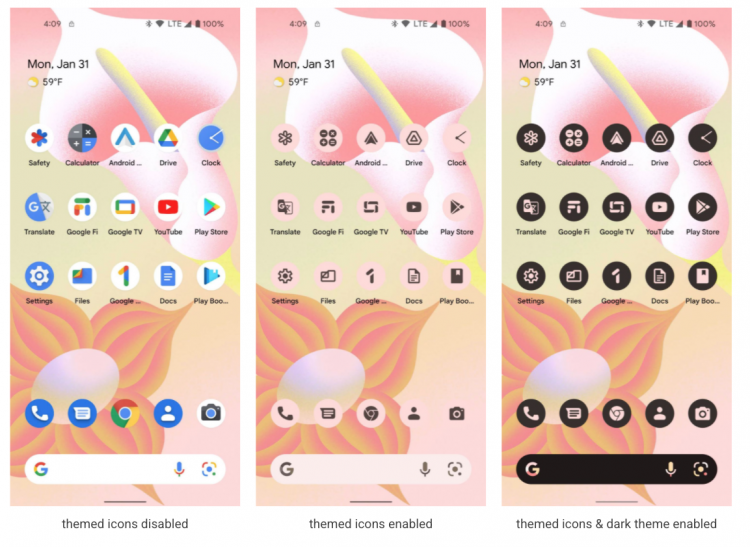
В Android 12 появились настраиваемые темы Material You с подстраивающейся к обоям цветовой гаммой. В Android 13 любые приложения могут использовать собственные значки в соответствии с темой, а не только фирменные приложения Google. Такие значки приобретают цветовой оттенок в соответствии с установленными обоями. Эта функция сначала появится на смартфонах Pixel, но Google обещает, что работает с производителями смартфонов над более широким запуском.
Новые функции безопасности позволяют обмениваться фотографиями и видео с отдельным приложением, при этом приложению не требуется разрешение на просмотр всех фотографий на устройстве. Google планирует в конечном итоге добавить эту функцию на все телефоны под управлением Android 11 и выше.
Также приложениям разрешат обнаруживать точки Wi-Fi и подключаться к ним без необходимости в разрешении на определение местоположения.
Ещё одно важное новшество — языковые настройки теперь можно будет устанавливать для каждого приложения отдельно. Это особенно удобно для многоязычных пользователей
UI changes
During this beta testing phase, developers discovered that Android’s new version differs significantly from the prior one.
Notification bar and Quick settings
Google appears to have spent a significant amount of time working on the design of the new Android version, with some significant improvements in the aesthetics and UI.
One of Android 13’s major changes is the overhaul of the notifications system. For example, you can set it to automatically group notifications by application or split them like usual.
Additionally, instead of swiping on the notification, as in Android 12, you will see an easy-to-use snooze feature that allows you to mute any application for a set amount of time.
To make things easier for users, Google has made some tweaks to its quick settings. When toggling options in the quick settings from the top of the screen, we used to see small circular buttons.
In its place are sleek, rectangular controls that are significantly larger. This size change will prevent you from enabling the wrong feature.
Android 13’s Lock screen and PIN keypad
Thanks to some improvements to the widget design, you may now select from various clock styles on the lock screen. On top of that, some polishing has been done to the lock screen itself.
You’ll be surprised to notice that the middle of the screen has a clean clock layout with hardly any notification mess. Additionally, you’ll also see that the keypad has changed if you decide to unlock your phone using the PIN code.
The minimalistic aesthetic and the use of pastel colors are both inspired by Material You (more on that soon). The big and rounded buttons improve the user experience when entering a PIN to unlock.
Android 13 and Material You
Google’s new unified design language, “Material You,” was initially launched with Android 12. It’s a design change where colors are taken directly from the chosen wallpaper and applied to your phone’s icons and overall theme.
Developers discovered that Google introduced three new color categories for Material You in Android 13 Beta 1. Android 13 presents these themes as 16 additional color extraction alternatives in your wallpaper picker.
Source: Google
You can also switch on the “themed icons” function, which modifies your mobile app icons to fit your phone’s color scheme.
One-hand mode
Do you typically use one hand to operate your phone? Android 13 is undoubtedly a good fit for you. The previous version also had this mode, but Android 13 has taken it to another level.
Users of Android 13 can activate the improved version of the One-hand mode from the settings. Google is ready to roll out this functionality for larger-screened phones after it first appears in the second preview.
Additional features
Some minor UI aspects have also undergone a few small tweaks to increase user convenience. Android 13 includes completely redesigned widgets that you may easily customize in the main window. The design of widgets makes it simple for them to fit into the user interface.
One of the most noticeable UI changes in Android 13 is the new media control widget, which pops up in the drop-down menu while music is playing.
Even on the lock screen, the new multi-media player takes up more area to make it easier to operate and see.
The video player has also been modified by Google so that users can still watch videos even when not in the video player application. This feature is called “floating window”.
Android 13’s New Features
Screenshots and editors
In considering Android 13 vs Android 12, it’s worth knowing what’s changed in existing apps.
Built-in media players like the Gallery, or Music applications and media capture features, were already flawless. In light of this, Android 13 introduces even better, polished, apps that go above and beyond excellent.
With Android 13, you may snap lengthier screenshots using the scroll capture feature. You may also edit them, add markup features, and type text in various fonts and colors.
Previously, you would’ve needed a separate third-party app to edit your pictures to your liking. But Google has perfected its ways to eliminate the need for a separate application.
You can add some emojis to your screenshots by clicking the emoji symbol. Additionally, you may pinch the screenshot to resize it.
Furthermore, this feature is not only for screenshots but also pictures. Before sharing an image with others, Android 13 allows you to edit it.
Support for new file types
An image encoder, AVIF (AV1 Image File Format), ensured JPEG-like quality while significantly reducing file size. It makes use of the AV1 codec, which debuted with Android 12.
Such files are supported by Android 13 to save space while preserving photo quality. With new features for music lovers in the latest version of Android, listening to music will feel like a brand-new experience.
Additionally, the pass-through and offload of MPEG-H (an audio coding standard) is supported by Android 13; It generally improves the end user’s audio experience.
Rumors suggest that Android 13 will be the first version to include support for Bluetooth Low-Energy Audio properly. The replacement for conventional Bluetooth audio streaming offers several benefits: including full support for the features added to Google’s hearing aid protocol, and lower energy consumption while maintaining the same audio quality.
It can also send signals to multiple headphones or speakers at once.
Application related features
The permission notification is the most intriguing new feature of Android 13. Because of this feature, users can grant applications temporary access to crucial phone data without giving them lifetime permission.
Android will ask you if you wish to allow the application to deliver notifications the first time you launch it. Moreover, it will enable users to delete or reset programs’ permissions later.
Another exciting update is a new speed optimization algorithm. This algorithm enhances the speed of Application launching (noticeably vs Android 12) and eliminates the background processes that use too much ram and resources.
The program’s performance is improved due to better work allocation and fewer latency concerns.
Get Android 13 beta
Undoubtedly, Android 13 is a huge update that emphasizes privacy more than ever and has a new look and design. Although the prior operating system was excellent, it cannot compete with the new one.
This superiority can be seen more in the second beta version of Android 13, which is now labeled “stable.” However, the beta versions still require polish and enhancements before being fully released.
You should undoubtedly upgrade if you want these huge improvements and to enjoy the new features.
If your smartphone is compatible, you can download Android 13 immediately, although we advise you to hold off until the final release.
Android 13 Update: List Of Compatible Devices
Flagship smartphones from major brands are likely to get the Android 13 update.
Subscribe to Onsitego
Get the latest technology news, reviews, and opinions on tech products right into your inbox
These Google devices will officially get the Android 13 update:
- Pixel 6
- Pixel 6 Pro
- Pixel 5
- Pixel 5a (5G)
- Pixel 4
- Pixel 4 XL
- Pixel 4a
- Pixel 4a (5G)
Samsung had announced that it would be updating quite a few of its phones for the next three generations. So, if you own a recent Samsung flagship or upper-mid-range phone, your phone might be eligible for the Android 13 update. Here’s the list of some of the Samsung phones that could get the update:
- Samsung Galaxy Z Fold 3
- Samsung Galaxy Z Flip 3
- Samsung Galaxy A52s 5G
- Samsung Galaxy M12
- Samsung Galaxy M21 2021
- Samsung Galaxy A22 5G
- Samsung Galaxy M52 5G
- Samsung Galaxy M32
- Samsung Galaxy F62
- Samsung Galaxy A83 5G
- Samsung Galaxy F22
- Samsung Galaxy M32 5G
- Samsung Galaxy S21 FE 5G
- Samsung Galaxy A73 5G
- Samsung Galaxy M42 5G (8GB RAM + 128GB)
- Samsung Galaxy M21 2021 (6GB RAM + 128GB)
- Samsung Galaxy F22 (6GB RAM + 128GB)
- Samsung Galaxy F42 5G
- Samsung Galaxy A03s (4GB RAM + 64GB)
- Samsung Galaxy F12
- Samsung Galaxy A52
- Samsung Galaxy S22 Ultra 5G
- Samsung Galaxy A53 5G
- Samsung Galaxy M52 5G (8GB RAM + 128GB)
- Samsung Galaxy A03s
- Samsung Galaxy M33 5G
- Samsung Galaxy A32
- Samsung Galaxy A22 5G (8GB RAM + 128GB)
- Samsung Galaxy M42 5G
- Samsung Galaxy M32 5G (8GB RAM + 128GB)
- Samsung Galaxy A22
- Samsung Galaxy A72
- Samsung Galaxy A32 5G
- Samsung Galaxy M21 Prime Edition
- Samsung Galaxy F12 (4GB RAM + 128GB)
OnePlus had also stated that it will be updating its flagship phones for the next three generations. So you can expect your latest OnePlus device to get the Android 13 update.
Interestingly, after LG announced its exit from the smartphone market, the company reassured LG smartphone users that it will continue to deliver the next three Android OS updates for all premium phones launched in 2019 and later. Here’s the list of LG phones slated to get Android 13 updates:
- LG Wing
- LG Velvet
- LG Velvet LTE
Новые возможности в настройках и персонализации
Новая версия Poco Android 13 предлагает ряд улучшений и новых функций в области настроек и персонализации, позволяющих пользователям максимально адаптировать свое устройство под свои предпочтения.
Расширенные настройки экрана
Теперь пользователи могут настроить различные параметры экрана, включая яркость, контрастность, насыщенность и температуру цвета. Это позволяет достичь идеального отображения цветов и сделать использование устройства более комфортным для глаз.
Персонализация темы
Poco Android 13 предлагает расширенные возможности для персонализации темы устройства. Теперь пользователи могут выбирать из большого количества стилей, шрифтов и иконок, чтобы создать уникальный и индивидуальный дизайн своего смартфона.
Также появилась возможность настроить звуковое оформление устройства, выбрав из различных мелодий, уведомлений и звуковых эффектов. Это позволяет создать атмосферу, которая соответствует индивидуальным предпочтениям пользователя.
Улучшенные возможности блокировки экрана
Poco Android 13 включает новые функции блокировки экрана, которые обеспечивают дополнительную безопасность и удобство использования. Теперь можно выбрать из различных методов разблокировки, включая PIN-код, шаблон, отпечаток пальца и распознавание лица.
| Новые функции | |
|---|---|
| Настройка параметров экрана | Регулировка яркости, контрастности, насыщенности и температуры цвета экрана |
| Персонализация темы | Выбор стилей, шрифтов и иконок для индивидуального дизайна |
| Новые звуковые эффекты | Настройка мелодий, уведомлений и звуковых эффектов |
| Улучшенные методы блокировки экрана | Возможность использования PIN-кода, шаблона, отпечатка пальца и распознавания лица |
Видео:Прилетела MIUI 14 — ХОЧЕТСЯ ПЛАКАТЬ Скачать

Android 13 Beta 1 Rolled Out
Android 13 has finally exited the Developer Preview stage and Google has finally rolled out the first beta of its upcoming Android iteration. Android 13 Beta 1 has now been rolling out to compatible devices and comes with a bunch of new features.
1. More Granular Permissions For Media File Access

Android 13 Beta 1 features a set of granular permissions for media file access. Currently, if an app wants to access files on a device’s storage, it needs to request the READ_EXTERNAL_STORAGE permission, which grants access to all types of media files. With the latest update, Google has introduced three different (granular) permissions, namely:
- (for images and photos)
- (for videos)
- (for audio files)
2. Better Error Reporting In KeyMint And Keystore
This feature is strictly for developers who generate KeyMint and Keystore keys. Android 13 Beta 1 brings about a new exception class hierarchy under java.security.ProviderException, with Android-specific exceptions that include Keystore/KeyMint error codes. The methods that are used for key generation, signing, and encryption, have also been made modifiable to throw these new exceptions.
3. Stylus Handwriting
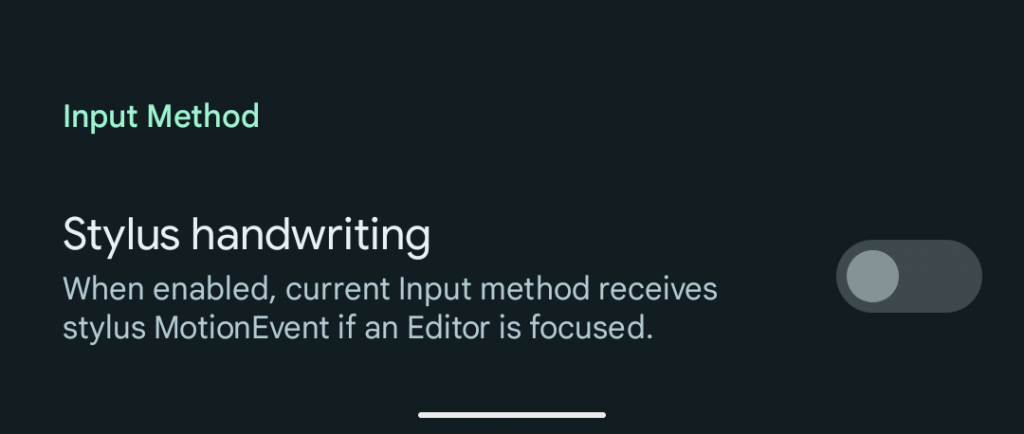
Google has added a new Stylus handwriting input method for smartphones running Android 13 Beta 1. When enabled, a compatible stylus can be used for handwriting on the device’s display, which could turn out to be a useful feature especially for large screen devices.
3. Copy/Clipboard Notification
With Android 13 Beta 1, Google has started showing notifications when one copies a text from the screen. Though not a very big update, it might still come in handy during specific instance.
4. Google Calendar Launcher Icon Shows The Current Date
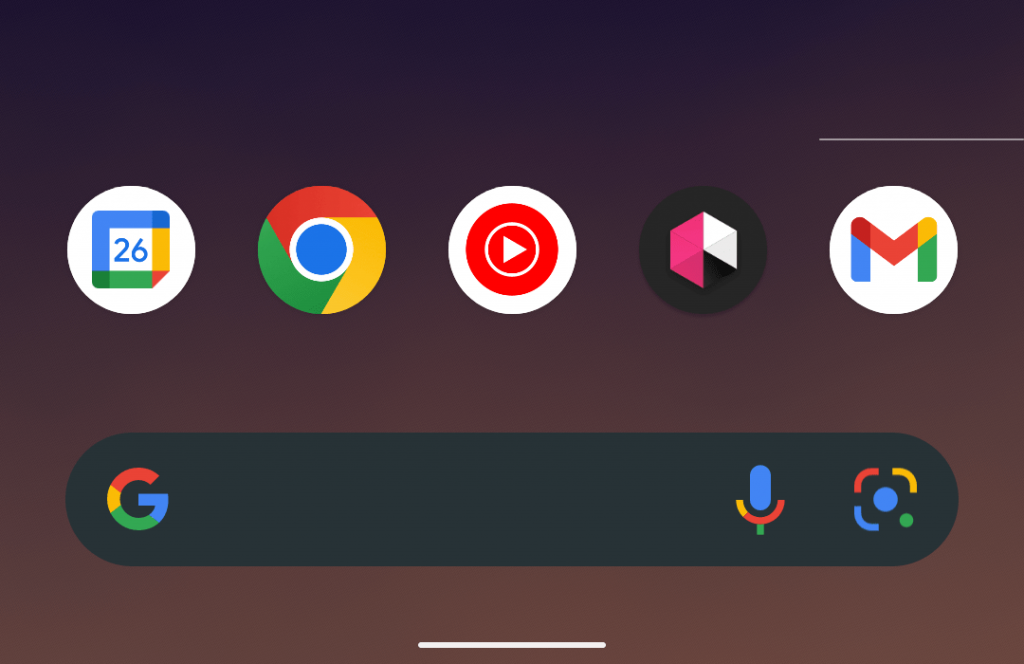
This feature was long overdue for Android. With Android 13 Bet 1, the Google Calendar launcher icon will finally show the current date, something various OEMs have already successfully pulled off in the past.
5. New “Control From Locked Device” Feature
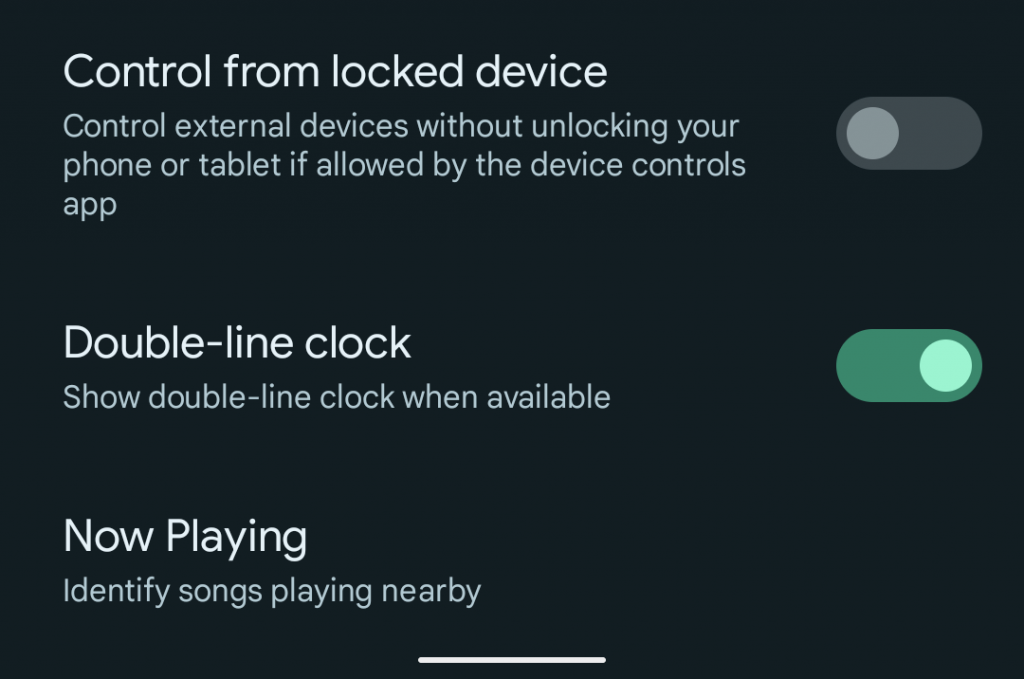
Android 13 Beta 1 comes with a new locked device control. With the latest Android iteration, the Android devices will be able to control external devices without having to unlock their phone or tablet. The feature would require the device controls to be enabled by the app to function properly.
6. New Basic Colours Added In Wallpaper And Style
With Android 13 Beta 1, Google has added a total of 16 basic colours to the wallpaper palette, including 11 single colours and 5 dual colours.
First Developer Preview Of Android 13
Google has released the first developer preview of Android 13, giving us a peek at its features. The preview is available for Pixel-owners brave enough to try it out, as it is still rough around the edges. The update is geared more towards developers than end users, so it’s best to wait until Google releases a stable build for Android 13.

Let’s check out what the Android 13 Developer Preview has to offer.
Android 13 Photo Picker APIs
Android’s document picker lets users share documents with an individual app, without having to give the app permission to see all the files you have on your phone. Now, with the developer build of Android 13, this capability is extended to the photo picker. The new photo picker API will let you access shared photos and videos without requiring permission to see all media files on your device.

However, this feature will not be limited to Android 13 devices. Google says that it plans to roll out the new photo picker API to users running Android 11 and newer via Google Play system updates. It will be available as part of a MediaProvider module update for all Android devices, with the exception of Android Go devices.
Material You Theme for all App Icons
One of the biggest highlights of the first Android 13 Developer Preview is support for Material You dynamic colour theme across all icons, and not just limited to Google’s own apps. Currently, Android 12 phones with the dynamic theme have a weird mix of both, icons with and without the theme, lending it a strange look. With the new Developer Preview, it will no longer be an issue.

Google announced that this feature will first come to Pixel devices, with plans to roll it out for other devices in the future.
New API for Nearby Wi-Fi Devices
Android 13 brings a new runtime permission for nearby Wi-Fi devices. It will allow apps to automatically discover and connect to nearby devices via Wi-Fi without requiring location permission. This could provide better privacy and make it more convenient to set up your smart home devices. Currently, the need for location permissions poses a challenge for apps that have no use for the location but need to simply connect to Wi-Fi devices.
Quick Settings Placement API
The new quick settings API will let users take action when an app wants to add a custom tile. The new feature will make it easier for users to make changes to settings via the notification shade without having to leave the app. A new system dialog will allow the user to add the custom tile in a single step, instead of navigating to Quick Settings to do the same.
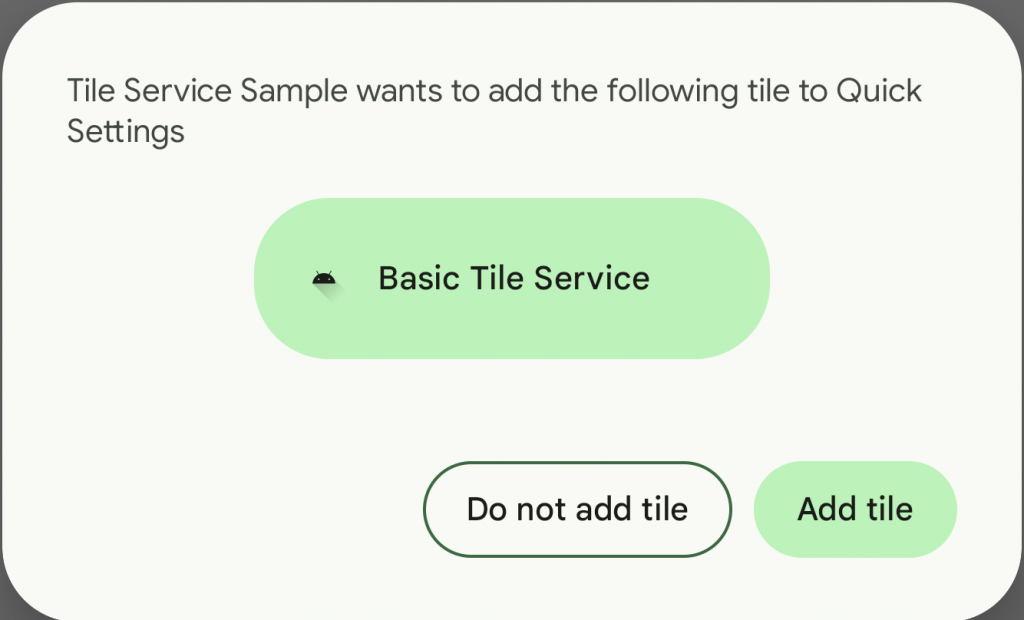
Per-App Language Preferences, Faster Hyphenation, and Programmable Shaders
Google has confirmed that the developer build will also get the aforementioned per-app language settings, targeted towards multilingual users. Google adds that it has “optimized hyphenation performance by as much as 200%” in Android 13 to make wrapped texts easier to read and improve the UI performance. It also adds support for programmable RuntimeShader objects, that are used internally to implement ripple effects, blur, and stretch overscroll.
What phones are able to get Android 13?
As usual, the new release will first be available for Pixel devices. Expect the rollout to Pixel 4, 5 and 6 devices to finish up during the third quarter of 2022, and the wider release for Samsung, OnePlus and other manufacturers is expected to begin in Q4 of 2022 and trickle into Q1 of 2023.
The Pixel 7 will be the first device released with Android 13, which should become available as soon as October. Google has never been quite accurate with its Android release dates. Even knowing that, I would expect that all Pixel devices will have Android 13 by the end of August and all other devices by the start of 2023.
Приложения и уведомления
Перед первым запуском приложения они теперь будут вас спрашивать, стоит ли вам присылать уведомления. Это очень полезная опция, т.к. раньше необходимо было заходить системные настройки и вручную отключать уведомления для каждого приложения.
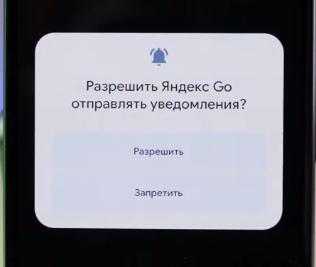
Пройдя в Настройки – Система – Язык и ввод, появился новый пункт – Языки приложений. Теперь вы можете, вне зависимости от системного языка для Android, выбирать тот или иной язык для каждого из приложений. Чтобы эта функция работала в сторонних приложениях, разработчикам необходимо добавить кусочки кода.
Утилита Запись экрана теперь позволяет показывать прикосновения к экрану.

Панель уведомлений
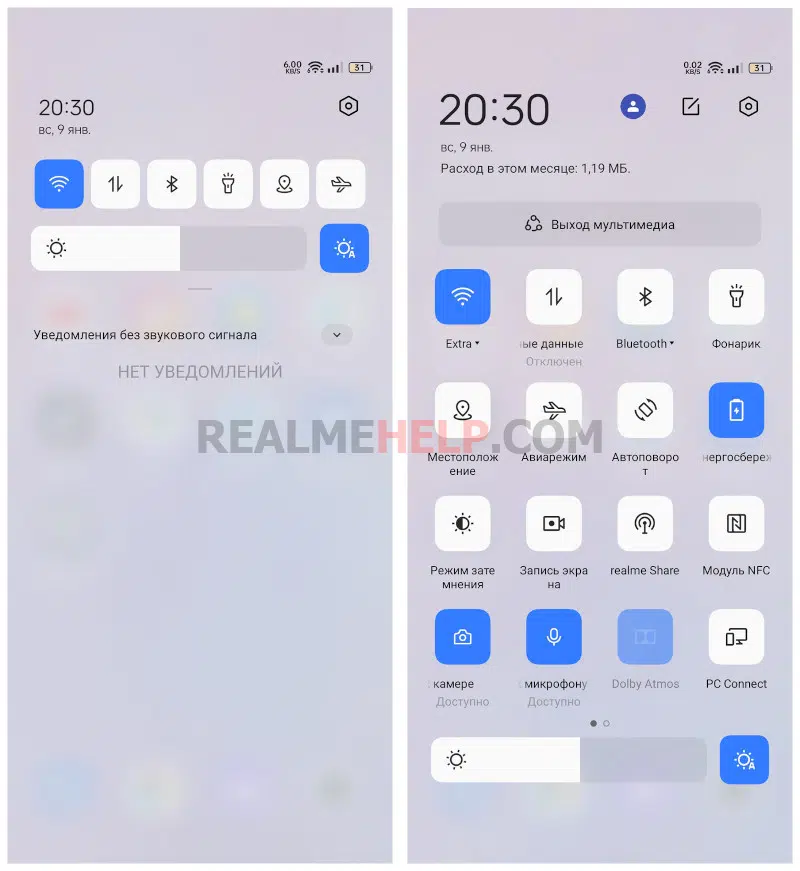
Теперь посмотрим на панель уведомлений, но с небольшим примечанием. У смартфонов серии GT немного видоизменили панельку в Realme UI 2.0, и тоже самое может случится в 3 версии. Поэтому дизайн оставим условным, а вот функционал будет тот же.
Панель уведомлений открывается на весь экран и что сразу бросается в глаза — анимация стала очень быстрой, то есть незаметно как само меню уходит вниз. Сразу открылось и готово. Панель идет с почти непрозрачным фоном.
В самом верху добавили кнопку выбора вывода звука с воспроизводимых приложений на все доступные подключенные устройства. Удобно, и тем, кто часто переключается, например на блютуз гарнитуру либо колонку будет более легко это делать.
Запрет для камеры и микрофона
Из новых функций в панели появились кнопки быстрого отключения доступа к камере и микрофону. И это довольно интересно реализовано, то есть даже если у приложения есть все права на запись звука в фоновом режиме, то при отключении доступа к микрофону через панель уведомлений микрофон полностью отключается. Тоже самое касается и камеры.
Android 13: Visual changes
More colors for Material You
After the attention drawn to Material You—Android 12 new design language—Google took the visual concept even further with Android 13. The new system offer seven more customization options, with a wider selection of colors (with 16 options based on the wallpaper in use, and 16 basic colors). Now, you can customize non-Google apps to match your phone’s wallpaper theme and colors.
Still without Android 12? Learn how to bring the visual design to older Android phones
Change lock screen clock layouts
If you saw enough Pixel 6 pictures with the lock screen, you may have noticed that basically all of them had the same plain layout, with the time centered on the screen with a 2×2 layout (hours on top, minutes below). Android 13 changes that with a new Double-line clock option in the Lock screen menu, which places the clock in the top left corner of the (lock) screen.
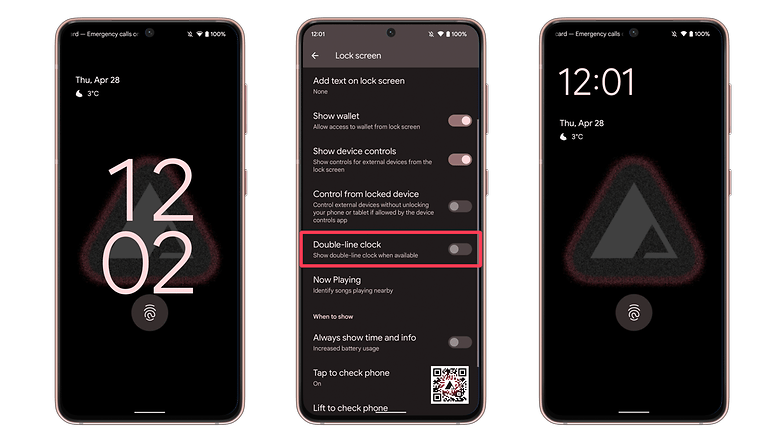
A small change, but customization options are always welcome / NextPit
Dark and light app icons
The update brings another visual change. Now developers are able to adapt the app icons to the phone’s theme. This results in dark and light app icons.

App icons can now be displayed in a uniform color! / NextPit
Google Calendar now displays the day in the app icon
In the screenshot above you can see another change in Android 13, the Google Calendar app now dynamically displays the current day, instead of simply showing «31». The update mirrors the same dynamic icon already used by the Clock app.
Now playing notification gets a redesign and squiggle progress bar
A small but charming change in Android 13 arrived in the now playing notification displayed in the notification shade and lock screen. More than highlighting the media’s artwork, the progress bar now squiggles to display what has already been played.
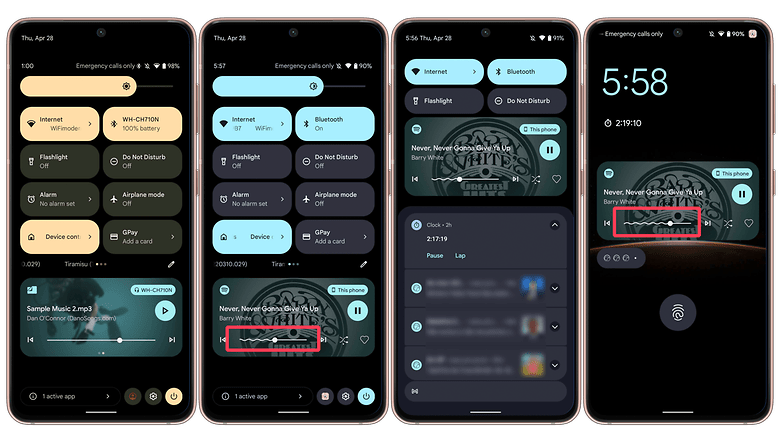
Compatible media apps now display a little animation on the notification’s progress bar / NextPit
Давай, бери новые обои
Начнем с самого главного экрана. Google ввел несколько «Основные цвета” на свои обои как часть Материал Вы интерфейс что он представил с Андроид 12.
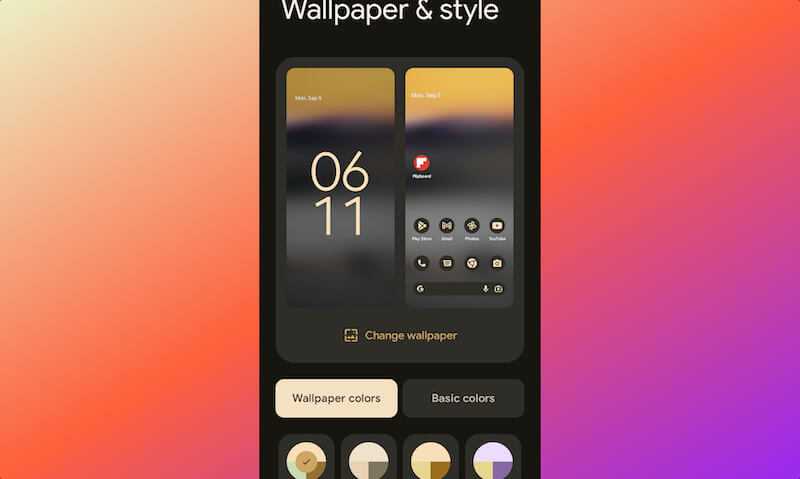
Что ж, он расширил этот портфель 16 новыми цветами, семь из которых однотонные и девять двухцветные. Да, у вас может быть собственная коллекция сторонних приложений или, может быть, вы хотите оставить фотографию своего любимого пушистого малыша, но мы рекомендуем вам попробовать новую коллекцию. Есть несколько необычных и довольно интересных вариантов.
Как это сделать:
- Идти к Настройки на вашем устройстве
- Выбирать Обои и стиль
- Выберите обои и основную цветовую схему, которые вы хотите
Или просто нажмите и удерживайте на главном экране, выберите «Обои и стиль» и продолжайте.






























